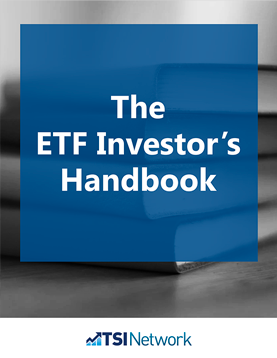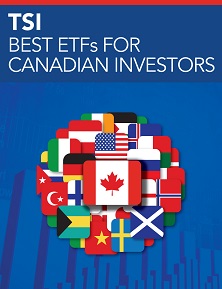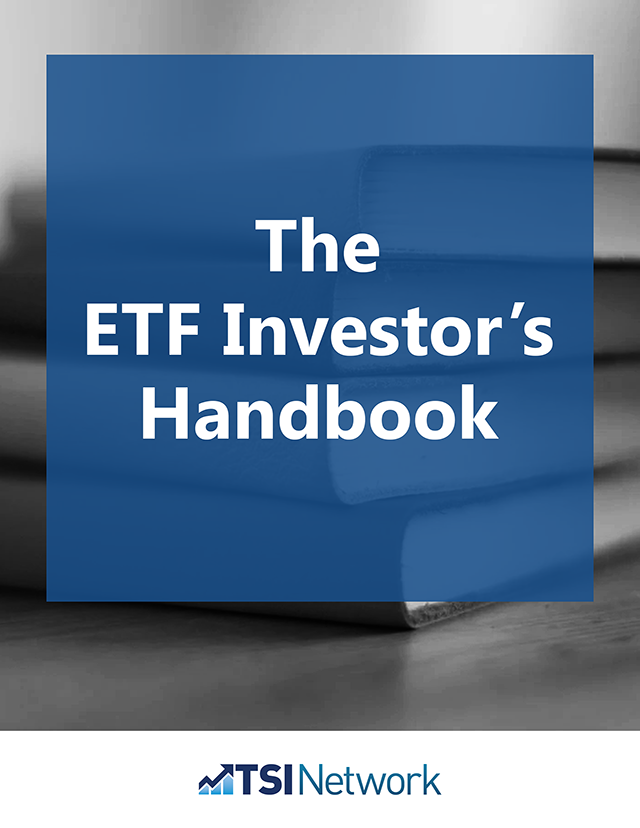Topic: ETFs
What is a bear fund?

Investors can use special ETFs called bear funds to hedge their positions in a market downturn.
A bear fund is a type of ETF that is designed to rise in market downturns. A bear market is a situation where stock market averages trend downward for a lengthy period. The opposite of a bear market is a bull market.
Here are a number of examples of bear fund ETFs—and our advice on whether buying them is a good strategy:
ProShares in the U.S. offers a range of exchange traded funds (ETFs) for U.S. stock indexes.
ProShares offers three types of ETFs:
1) ProShares Short ETFs are designed to move in the opposite direction of the underlying index. For example, ProShares Short S&P500, $20.89, symbol SH on the New York exchange, aims to move in the opposite direction of the daily performance of the S&P 500 Index. This ETF has a 0.90% MER.
If the S&P 500 index is down 2% on a particular day, the Short S&P500 ETF should be up about 2%. If the S&P 500 Index rises 2%, the Short S&P500 ETF should fall 2%.
Other short market index ETFs offered by ProShares include:
ProShares Short QQQ, symbol PSQ on the New York exchange, aims to move in the opposite direction as the Nasdaq 100. This ETF has a 0.95% MER.
ProShares Short MidCap 400, symbol MYY on the New York exchange, aims to move in the opposite direction as the S&P 400 MidCap index.
ProShares Dow30, symbol DOG on the New York exchange, aims to move in the opposite direction as the Dow Jones Industrial Average. This ETF has a 0.95% MER.
2) ProShares also offers UltraShort ETF versions of the same market indices. Using borrowing and/or derivatives, these UltraShort ETFs are supposed to move twice as far in the opposite direction as the market indices.
For example, ProShares UltraShort S&P500, $20.00, symbol SDS on the New York exchange, aims to move 200% in the opposite direction of the daily performance of the S&P 500 Index. This ETF has a 0.91% MER.
If the S&P 500 index is down 2% on a particular day, the ProShares UltraShort S&P500 should be up about 4%. If the S&P 500 index rises 2%, the ProShares UltraShort S&P500 should fall 4%.
Other UltraShort market ETFs are:
ProShares UltraShort QQQ, symbol QID on the New York exchange, aims to move twice as far in the opposite direction as the Nasdaq 100. This ETF has a 0.95% MER.
ProShares UltraShort MidCap 400, symbol MZZ on the New York exchange, aims to move twice as far in the opposite direction as the S&P 400 MidCap index. This ETF has a 0.95% MER.
ProShares UltraShort Dow30, symbol DXD on the New York exchange, aims to move twice as far in the opposite direction as the Dow Jones Industrial Average. This ETF has a 0.95% MER.
3) ProShares also offers Ultra ETFs that are designed to double the daily performance of the underlying index. Instead of just matching the index like a regular ETF, they aim to use leverage to offer twice (200%) of the index’s daily performance.
For example, ProShares Ultra S&P500, symbol SSO on the New York exchange, aims to move twice as far in the same direction of the daily performance of the S&P 500 Index. This ETF has a 0.91% MER.
If the S&P 500 index falls 2% on a particular day, the ProShares Ultra S&P500 should fall about 4%. If the S&P 500 index rises 2%, the ProShares Ultra S&P500 will rise 4%. This ETF has a 0.89% MER.
Other Ultra market ETFs are:
Proshares Ultra QQQ, symbol QLD on the New York exchange, moves 200% in the same direction as the Nasdaq 100. This ETF has a 0.95% MER.
ProShares Ultra MidCap 400, symbol MVV on the New York exchange, moves 200% in the same direction as the S&P 400 MidCap index. This ETF has a 0.95% MER.
ProSharesUltra Dow30, symbol DDM on the New York exchange, moves 200% in the same direction as the Dow Jones Industrial Average. This ETF has a 0.95% MER.
As a general rule, we advise against short selling much as we advise against options trading, leverage, currency speculation and bond trading. In all these activities, it’s a rare investor who makes enough profit to compensate for the risk involved. Our view is that if you like the outlook for a market index, you should invest in stocks that will profit from a rise in the index.
Institutional investors, particularly hedge funds, carry out around 60% of all trading in leveraged and inverse-leveraged investments. They generally use them as part of complicated, multi-investment trading gambits. This eliminates some but not all of the drawbacks to these investments, particularly the trading costs that tend to eat up the invested capital.
Looking specifically at ProShares, one added risk is counterparty risk. That’s the risk that the other party in a contract to repurchase securities will default on their obligations. Counterparty risk increases during times of extreme market volatility.
ProShares also enters into repurchase agreements only with large, well-capitalized and well-established financial institutions. But the cost of eliminating counterparty risk is going to cut into the potential profit that you earn by investing in ProShares. So will any losses you incur due to timing errors—buying the Short or UltraShort series prior to a market rise, or buying the Ultra market series prior to a market downturn.
Inevitably, investments like these will go down more readily than they go up. That’s because investors have to absorb the costs of borrowing, entering into agreements with counterparties and so on, on top of the MERs.
|
Manage your portfolio successfully into retirement Relax. You can have clear, simple guidelines on planning and enjoying a successful retirement. You benefit from our experience in the day to day work we do building wealth for our Successful Investor Wealth Management clients. We’ve packed our experience into one comprehensive guide for you—”12 Steps to the Retirement You Want.”
|
Investor extra: 3 quick tips for profitable mutual fund investing:
1. Get out of “theme” mutual funds, especially if the mutual fund’s theme seems to be plucked from recent headlines. It pays to stay out of narrow-focus, faddish funds, all the more so if they’ve come to market when the fad dominates the financial headlines.
Theme funds like these face a double disadvantage, because they appeal to impulsive investors who pour their money in just as the fad hits its peak. This forces the manager to pay top prices —perhaps to bid prices higher than they’d otherwise go—even if this goes against their better judgment. These same investors are also apt to flee when prices hit their lows, forcing the mutual fund manager to sell at the bottom and lowering the mutual fund’s performance. But when a fad dies out, as they all do, the fund’s liquidity dies out with it. The manager may have to dump the mutual fund’s holdings when demand is at its weakest, forcing prices lower than they would otherwise go.
2. Get out of bond mutual funds. Many bond funds built great performance records in the last decade. But this was a function of the trend in interest rates; when rates fall, bond prices go up. Interest rates are low right now, but could move upward over the next few years as the economy recovers or in response to inflation fears. This is another way of saying that bond prices could fall.
When bonds yielded 10%, perhaps it made some sense to buy bond funds and pay a yearly MER of, say, 2%. Now that bond yields are down closer to 4%, it makes a lot less sense, and has a greater impact on your mutual fund’s performance.
The bond market is highly efficient, and we doubt that any bond mutual fund’s performance can add enough to offset its management fees. In addition, investing in a bond mutual fund exposes you to the risk that the manager will gamble in the bond market and lose money.
Bonds are attractive for predictable income, and as an offset to the stocks in your portfolio. But it’s cheaper to buy bonds directly than to do so through a bond mutual fund. If you want capital gains, buy stocks or stock-market mutual funds.
3. Get rid of mutual funds that show wide disparities between the mutual fund’s portfolio and the investments that the sales literature describes.
Many mutual fund operators describe their investing style in vague terms. It’s often hard to find out much about who is making the decisions, what sort of record they have, and what sort of investing they prefer. We always take a close look at a mutual fund’s performance and investments to see if they differ from what the prospectus or sales literature would lead investors to expect. For example, it may suggest broad diversification, but it may in fact hold a disproportionate amount of mining stocks. Our advice: When a mutual fund takes on a lot more risk than you’d expect, you should get out.
|
Investing tip: Use our three-part strategy No matter what kind of stocks you invest in, you should take care to spread your money out across the five main economic sectors: Finance, Utilities, Consumer, Resources & Commodities, and Manufacturing & Industry. By diversifying across most if not all of the five sectors, you avoid overloading yourself with stocks that are about to slump simply because of industry conditions or investor fashion. You also increase your chances of stumbling upon a market superstar — a stock that does two to three or more times better than the market average. Our three-part Successful Investor strategy to help investors sleep at night:
|
Have you invested in a bear fund? Has it proved to be a useful tool to hedge against a bear market? Please share your experience with us in the comments.



